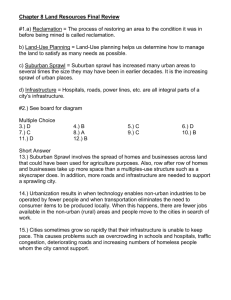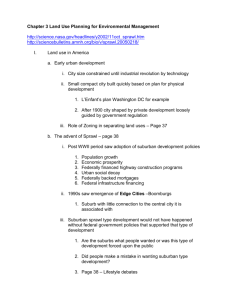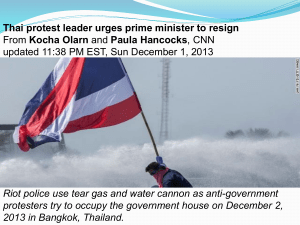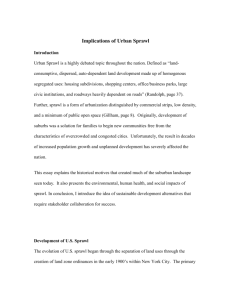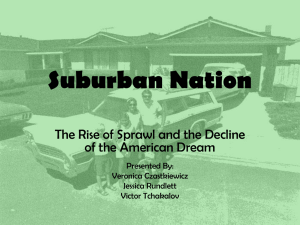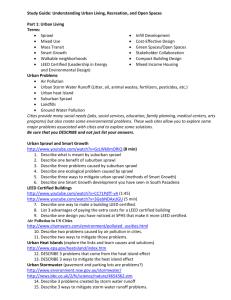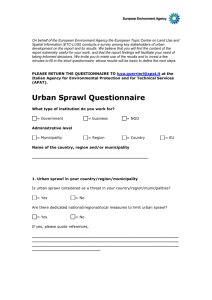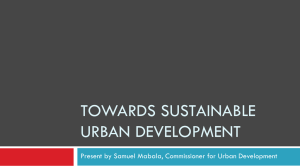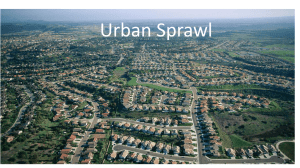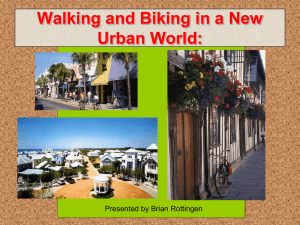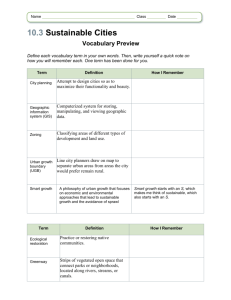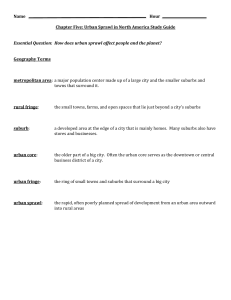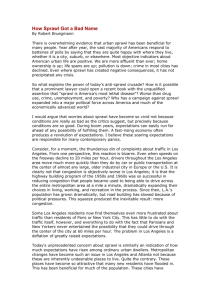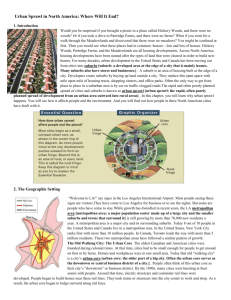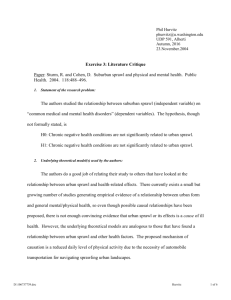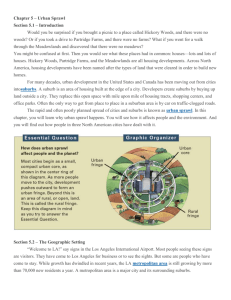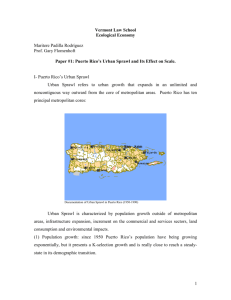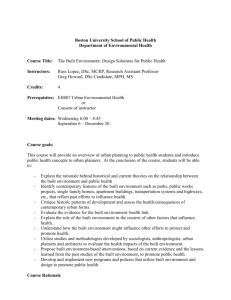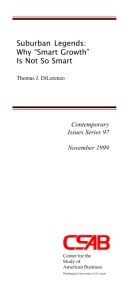Chapter13notes - Center for Environmental Philosophy
advertisement
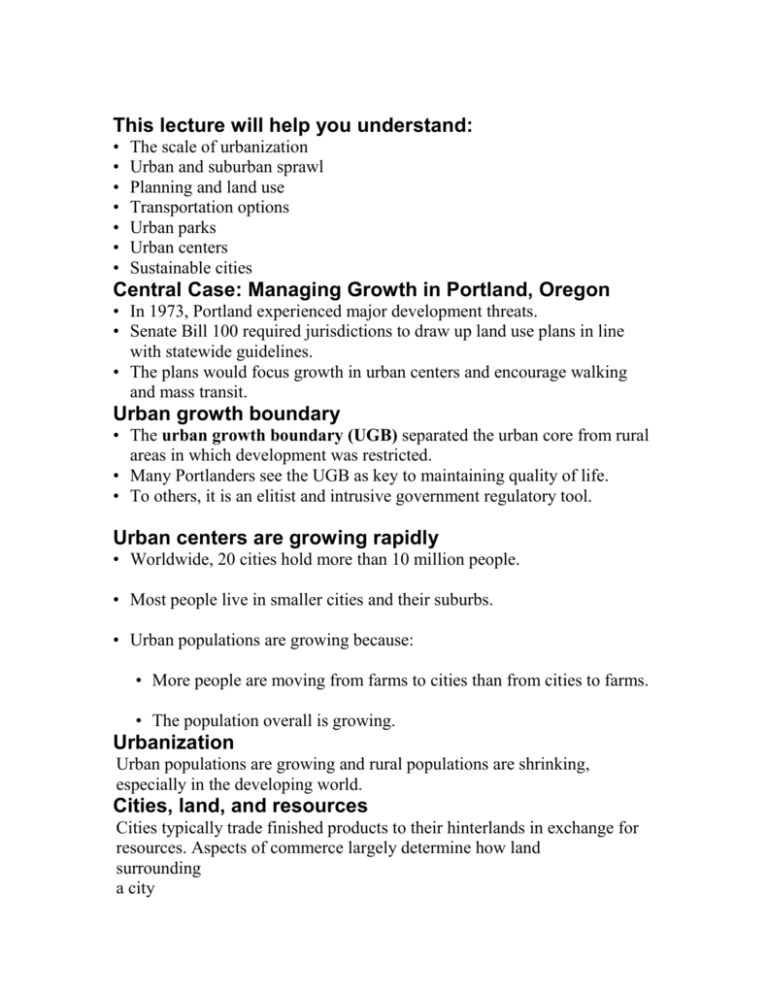
This lecture will help you understand: • • • • • • • The scale of urbanization Urban and suburban sprawl Planning and land use Transportation options Urban parks Urban centers Sustainable cities Central Case: Managing Growth in Portland, Oregon • In 1973, Portland experienced major development threats. • Senate Bill 100 required jurisdictions to draw up land use plans in line with statewide guidelines. • The plans would focus growth in urban centers and encourage walking and mass transit. Urban growth boundary • The urban growth boundary (UGB) separated the urban core from rural areas in which development was restricted. • Many Portlanders see the UGB as key to maintaining quality of life. • To others, it is an elitist and intrusive government regulatory tool. Urban centers are growing rapidly • Worldwide, 20 cities hold more than 10 million people. • Most people live in smaller cities and their suburbs. • Urban populations are growing because: • More people are moving from farms to cities than from cities to farms. • The population overall is growing. Urbanization Urban populations are growing and rural populations are shrinking, especially in the developing world. Cities, land, and resources Cities typically trade finished products to their hinterlands in exchange for resources. Aspects of commerce largely determine how land surrounding a city becomes used. Suburbanization and sprawl • Beginning in the 1950s, many people moved from crowded inner-city areas to the suburbs. • They wanted more space, better economic opportunities, cheaper real estate, less crime, and better schools. • Suburban growth has spread human impact across the landscape. • Sprawl: the spread of low-density urban or suburban development outward from an urban center. Urbanization In Las Vegas, population increased more than fivefold, and the developed area increased more than threefold from 1972-2002. Causes of sprawl Two main components of sprawl: • Human population growth • Per capita land consumption—each person takes up more land. Reasons: • Telecommunications have moved business from cities • Most people like space and privacy • Assumption that growth is good But this assumption is increasingly being challenged. Uncentered commercial strip development Low-density single-use development Homes are located on large lots in residential tracts far away from commercial amenities. Problems with sprawl • Transportation: Sprawl forces people to drive cars. • Pollution: Increased driving causes increased air and water pollution. • Health: Sprawl promotes physical inactivity because driving replaces walking during daily errands. • Land use: More land is developed and less is left as forests, fields, farmland, or ranchland. • Economics: Sprawl funnels tax dollars into infrastructure (e.g., roads) for new development. City planning Parks, greenways, and efficient transportation played a key role in early city planning, the professional pursuit that attempts to design cities so as to maximize their efficiency, functionality, and beauty. Regional planning • City planning grew in importance as urban populations fled to the suburbs. • In today’s world of sprawling metropolitan areas, regional planning has become just as important. • Regional planners work on broader geographic scales and must coordinate with multiple governments. • In some places, regional planning has been institutionalized within governmental bodies (e.g., Portland). Zoning • Zoning is the practice of classifying areas for different types of development and land use. • Restricts areas to one use or allows a mix of uses (e.g., residential and commercial). • Allows home and business owners to know in advance what types of development can be located nearby. • Represents a top-down constraint on personal property rights. Urban growth boundaries • UGBs have been adopted in many communities across the country. • They help maintain farms and natural areas, and appear to reduce infrastructure costs as compared to sprawl. • But they also seem to increase housing costs within their boundaries. Urban growth boundaries The Portland UGB separates urban from designated rural areas. Smart growth Smart growth aims to guide the rate, placement, and style of development such that it serves the environment, the economy, and the community. New urbanism New urbanism seeks to design neighborhoods on a walkable scale, with homes, business, schools, and other amenities all close together for convenience. Transportation • Transit-oriented development arrays compact, new urbanist communities around the stops on a major rail transit line. • Livable cities provide multiple transportation options (public buses, trains, subways, light rail). • Mass transit is cheaper, more energy-efficient, and cleaner than roadways choked with cars. Transportation • Portland, Oregon, and Curitiba, Brazil, are two success stories in creating livable cities. • Key components are: • Strong public transportation • Pedestrian and bike friendly • Zoning to limit sprawl • Environmental education • Self-sufficient neighborhoods Transportation Transit modes differ in their effectiveness: Parks and open space • City parks were widely established at the turn of the last century. • They used aesthetic ideals borrowed from European parks: lawns, shaded groves, curved pathways. • Landscape architect Frederick Olmsted was influential in many cities. • Conflict: Passive recreation for wealthy elites vs. Active recreation for the working class Parks and open space Forest preserves wind through the suburbs surrounding Chicago. Public spaces • Small public spaces can contribute to a healthy urban environment. • Community gardens allow people to grow their own vegetables and flowers in a neighborhood setting. • Greenways provide access to nature, boost property values, and serve as wildlife corridors. Urban sustainability Environment impacts of urban resource consumption: • Resource sinks: Cities and towns must import resources from widespread sources beyond their borders. • Efficiency: Cities should minimize consumption by maximizing the efficiency of use and distribution. • More consumption: Because cities draw resources from afar, their ecological footprints are much greater than their actual land areas. Urban sustainability New York City has protected watershed land to minimize pollution and protect the quality of its drinking water. Urban sustainability Urban centers: • Preserve land. Because people are packed densely together in cities, more land outside cities is left open and undeveloped. • Suffer and export pollution. Just as cities import resources, they export wastes. • Foster innovation by promoting a flourishing cultural life and mixing diverse people and influences. Urban sustainability • Urban ecology applies ecosystem ecology and systems science to urban areas. • Urban sustainability advocates suggest that cities: • Maximize efficient use of resources • Recycle as much as possible • Develop environmental friendly technologies • Account fully for external costs • Offer tax incentives for sustainable practices • Use locally produced resources • Use organic waste and wastewater • Encourage urban agriculture Conclusion • The impacts of urban and suburban dwellers are less direct but often more far-reaching than rural impacts. • Resources must be delivered over long distances, requiring the use of still more resources. • Cities are developing solutions to promote sustainability. • Expanding transportation options and ensuring access to greenspaces are key components of urban sustainability. • While smart growth and new urbanism provide solutions to sprawl, freemarket theorists resist government involvement in influencing land use choices.

